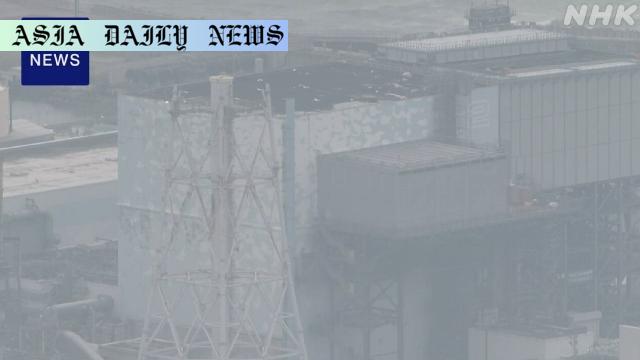Fukushima: TEPCO’s experimental fuel debris retrieval marks significant progress in managing nuclear debris challenges.
- Fukushima’s TEPCO achieves success in experimental retrieval of nuclear debris.
- The debris sample, weighing a few grams, was taken from a different site than previous experiments.
- Plans include safely removing equipment while managing its radiation levels.
- The operation is a crucial step toward decommissioning Fukushima Daiichi reactors.

Fukushima Daiichi’s Fuel Debris Retrieval: A Glimpse of Progress
The Tokyo Electric Power Company (TEPCO) has made a significant stride in the lengthy and complex process of decommissioning the Fukushima Daiichi nuclear power plant. During its second experimental fuel debris retrieval operation at Reactor No. 2, TEPCO successfully managed to retrieve a small fragment of debris. This operation represents a critical milestone in grappling with the aftermath of the catastrophic 2011 nuclear disaster. The debris, estimated to weigh only a few grams, was taken using a specially designed retrieval device integrated into a pipe-shaped tool, showcasing the nuanced engineering required to execute such a delicate task securely in high-radiation environments.
Advancing Techniques to Manage Challenges
TEPCO’s efforts demonstrate not only technological sophistication but also adaptability. Previous retrieval experiments conducted in November 2022 informed their strategy for this round, causing a shift in collection sites to maximize the chances of dependable data sampling. The retrieval device was lowered to a depth where varied debris compositions were anticipated, emphasizing the dynamic conditions of the containment vessel’s interior. As the experimental method evolves, it highlights the company’s determination to understand the nuclear debris’ composition accurately and the conditions under which it rests. Such understanding is vital to devising sustainable solutions for the full-scale extraction phase in the future.
A Monumental Task Ahead
Despite these technological breakthroughs, the decommissioning journey of the Fukushima Daiichi site remains daunting. With an estimated 880 tons of nuclear debris split among reactors No. 1, 2, and 3, the ability to retrieve even a few grams is a reminder of the scale of this undertaking. Its high radiation levels continuously challenge engineering ingenuity. TEPCO’s approach to irradiated equipment removal further underscores their commitment to safety. By precisely managing radiation levels of the retrieval device before encasing it inside safe transport containers, TEPCO is clearly prioritizing worker and community safety.
The Long-Term Vision and Its Global Implications
Fukushima Daiichi’s decommissioning project has far-reaching implications. It serves as a live case study for nations balancing the benefits of nuclear power with its possible consequences. Success in this arena could signify a blueprint for tackling severe radioactive contamination globally. By investing in research and innovation to confront the unprecedented dilemmas posed, TEPCO sets itself as a forerunner in nuclear safety and rehabilitation.



Commentary
Reflecting on the Fukushima Daiichi Milestone
The news of TEPCO’s successful retrieval of nuclear debris from Reactor No. 2 is a reminder of the resilience and innovative potential of human engineering in addressing one of the world’s most severe nuclear disasters. The 2011 incident profoundly shook global confidence in nuclear energy, placing an immense responsibility on TEPCO to deliver solutions that ensure long-term safety and environmental recovery.
A Technological Triumph Amid Challenges
TEPCO’s milestone is indeed promising but serves as a modest beginning in a massive endeavor. Retrieving even a few grams may seem insignificant in light of the immense 880 tons of remaining nuclear debris, but it symbolically underscores humanity’s ability to tackle incredibly complex tasks over time. The adaptation in retrieval techniques between operations indicates a robust commitment to improvement and learning, setting a hopeful precedent for future innovations in high-risk decommissioning projects.
The Broader Implications
On a larger scale, this achievement reignites the conversation about the role of nuclear power infrastructure in a world demanding sustainability yet exposed to catastrophic vulnerabilities. The success of Fukushima’s decommissioning not only heralds Japan’s ability to overcome adversity but could also inspire global shifts in how we approach nuclear energy projects, from safety protocols to disaster mitigation planning.
Looking Toward a Safer Future
While TEPCO’s journey is far from over, this progress is undoubtedly worth celebrating. It sends a strong message of hope – that even in the face of monumental crises, persistence, and ingenuity can pave the way toward recovery. The world will watch with keen anticipation as Fukushima’s legacy continues to unfold, both as a cautionary tale and a testament to our resolve to overcome adversity.